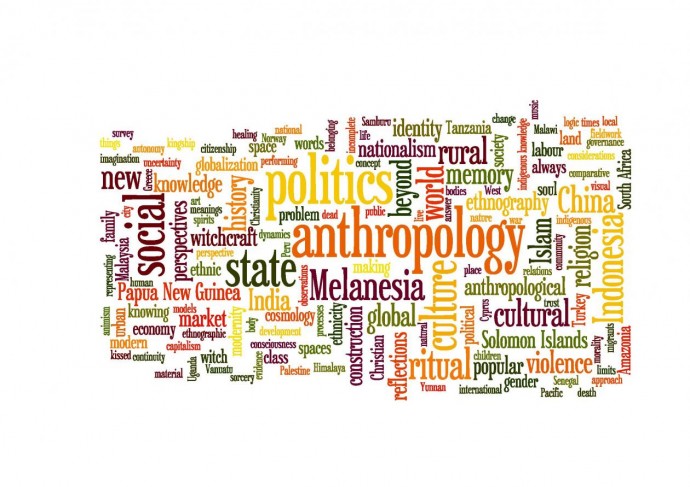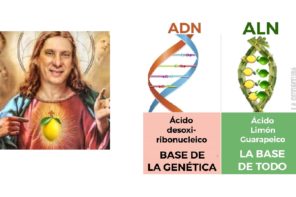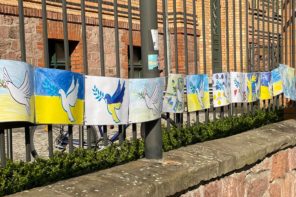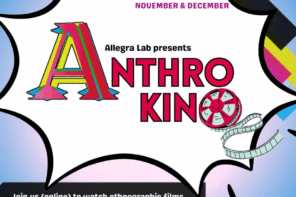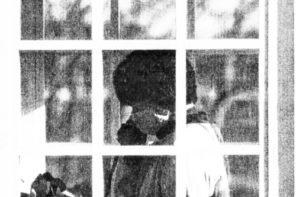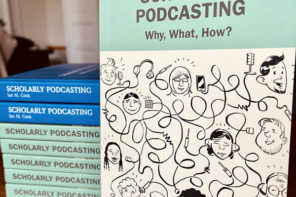In its endeavour to cover the most important events on the anthropology calendar, Allegra approached Noel Salazar, the president of the EASA and Professor of anthropology at the University of Leuven. He shares with us some insights on the upcoming EASA conference that will take place in Tallinn, Estonia, from 31st August to 3rd August 2014, under the promising theme: “Collaboration, Intimacy and Revolution”. Allegra will (of course!) attend the conference and report on its most exciting moments…But until its start, stay tuned for our regular sneak previews!
Noel Salazar, it is a great pleasure for Allegra to have this virtual discussion with you! Perhaps introductions are in order first – we know that you are the President of the EASA and work on migration, but would you want to elaborate in a few words; what it is that you would want Allegra’s readers to most know of yourself – and of course, what do you wish to highlight of EASA?

I find it interesting that you identify me as a scholar of migration. Outside anthropology, I am mostly known for my work on heritage and tourism (e.g. my book Envisioning Eden, published by Berghahn in 2010). I probably have more personal experience with migration than I have conducted research on the topic. What I am fascinated by, though, is everything related to mobility, an area of study that goes far beyond human migration. This is the reason why, in 2010, I founded the EASA Anthropology and Mobility Network as a forum for exchanging theories and methodologies of people, objects and ideas on the move. Maybe more about this later. Currently, I do belong to the category of presidents of anthropological associations. I am proud to be leading the European Association of Social Anthropologists, especially in a year when we are celebrating our 25th anniversary for the association of anthropologists and we want to highlight this during our upcoming biennial conference in Tallinn, Estonia (31 July – 3 August 2014).
Overall, it appears that the issue of migration/movement is one of the most active discussions within anthropology. In your view, just how is anthropology in specific relevant for considering the issues embedded in these discussions? How do you see these discussions yourself – is our ‘hunch’ of recent proliferation & excitement over these themes accurate in your view? Which works or by whom have you recently been inspired yourself? What kind of questions or approaches do you consider neglected so far, or rather as ones that you suggest keeping an eye on?
At the annual meeting of the American Anthropological Association in Chicago last year, there was a gathering of presidents of anthropological associations. When asking around the table what is currently ‘hot’ in anthropology around the globe, two topics stood out: cultural heritage and migration/mobility. I was glad to hear this, not only because those are the themes I am working on myself but also because it indicates that the majority of anthropologists are dealing with issues that have broad societal relevance. If not, the discipline would have a much harder time than it already has now.
You are right to notice that the scholarly interest in mobility has been on the rise. A simple Internet search for publications or conferences on ‘mobility’ will confirm anniversary. EASA is quite unique as a regional organisation. It is important to clarify the difference with migration studies (as there can be a confusion of concepts). Many academics studying migration are not so interested in the actual movement of people but more in how migrants integrate or how they maintain ties with their land of origin. The anthropology of mobility, however, wants to study and understand the how and why of movement, not only of people but also of cultures, objects, capital, businesses, services, diseases, media, images, information, and ideas circulating across (and even beyond) the planet. The strength of anthropology in this area of study is its focus on the multiple, sometimes conflicting, meanings of these movements, for individuals as well as for cultures or societies.
My sources of inspiration are varied. I would like to stress non-academic ones first. A number of artists have produced state-of-the-art work on (im)mobility. To name just one example, the provoking performance of illegal border crossings in Europe by the Serbian multimedia artist Tanja Ostojic is worth comparing with scholarly analyses of this topic. I also find inspiration in novels and movies that deal with mobility and travel (and the variations on this theme just seem endless). As far as anthropology is concerned, you may be surprised when I say that I find much of the older ethnographic work very relevant. While there are wonderful ethnographies being published about mobility nowadays, what the founding fathers of the discipline have (not) written on the topic, couched in a different discourse, is illuminating too.
In fact, anthropological theorizing has contributed much to interdisciplinary mobility studies. Unfortunately, we are lagging behind in developing adequate methodologies to study movement. This has much to do with the traditional ways in which most anthropologists are still being trained. We need more comparative cross-cultural work on mobility and what it means from various emic perspectives.

The theme of EASA’s 25th anniversary conference is Collaboration, Intimacy & Revolution: Innovation and continuity in an interconnected world. The three keywords are equally important. Collaboration refers, among other things, to new ways of doing anthropology and being anthropologists. Our new presentation format of ‘laboratories’ allows colleagues to explore non-orthodox ways of engaging with anthropological objects and subjects of study. Many changes and innovations are the result of revolutions, and we take the anniversary of the fall of the Berlin Wall and of EASA itself as an opportunity to reflect on this. Intimacy, finally, points to the importance of emotions and the senses in interpersonal relations. As the diversity of accepted panels illustrate, the three concepts can be connected in surprising ways.
Since you are asking, our conference theme does not refer explicitly to ontology and there are very few submitted paper abstracts that make reference of what is known in certain anthropological circles as the ‘ontological turn’. You are right that this has been a hotly debated issue on various social media channels lately. We at EASA paid attention to ontology in our journal Social Anthropology. Personally, I find ontological considerations important and I appreciate the anthropological work that has been done on this. Unfortunately, much of the current debate takes place in a language that excludes rather than including people. On a global scale, other issues currently seem to be more dominant in anthropology.
Allegra is, of course, an online experiment, and we would like to discuss a few related issue too. To us our experiences of the past year have really concretized that – regrettably perhaps – the social media is definitely one dictated by American scholars, and thus, instead of the radical potential of the social media to increase exposure for scholarly work and thus to really assist in making also anthropological discussions ‘global’, we seem to be witnessing a strengthening of American predominance. We cannot but also note that European scholars – thinking of merely this geographically focused group for the moment – have been much slower, and perhaps somewhat more ‘cautious’ in embracing the possibilities for blogging and Twitter, for example. Do you agree with our sentiments, and if so, what kind of reasons do you see as having contributed to this current situation? What do you think could be done to change the current situation – after all, at least in principle everyone can just jump in on current scholarly debates irrespective of their geographic location. Why are we not seeing this embodied in our ongoing discussions?
This is linked to what I was saying before. Like Allegra, we at EASA are convinced of the potential of social media to further anthropological exchange and debate. We are active on all major platforms but attract most attention on Twitter and Facebook. On both channels, we have become a point of reference for those interested in (mostly academic) anthropology. However, as you point out, there are many challenges. One of the most important ones is language. Only a minority of EASA members has English as a first language. The predominance of English in academic exchange (not only on social media but also in publications) excludes many people and reinforces parallel academic communities in other languages such as Spanish or Chinese. To go against this trend, EASA, together with three other major anthropological associations (AAA, CASCA and ABA), launched a webinar last year on Language and Anthropological Knowledge in English, French, Portuguese and Spanish.
Apart from language, also the themes discussed matter. Some people seem to forget that the majority of anthropologists across the globe have little or no time for research. They either teach anthropology or apply anthropological knowledge in the most diverse settings. Obviously, their needs and interests are often radically different from those colleagues at research universities. The Why the World needs Anthropologists symposium organized by the EASA Applied Anthropology Network in Amsterdam last year confirmed that there is a great demand for more practical anthropological knowledge. In other words, the beating heart of anthropology is not necessarily found in (sometimes heated) scholarly debates. After all, the majority of people with a (doctoral) degree in anthropology do not work within academia.

As I have said before, I honestly believe that anthropologists can do a lot more with social media in order for their research and knowledge to have a wider impact than it currently has. To do this successfully requires flexibility because most of us need time to learn the language of the new media and to learn how to interact with its user base. For one, the use of social media (as a tool, not an end) implies that we are no longer speaking only among anthropologists, that is, if we communicate in ways that non-anthropologists understand. Social media are not only useful to disseminate findings but also to gather and discuss data and even to enter into a dialogue with other stakeholders (including informants). This entails a change of mentality among anthropologists, from (over)protecting to sharing. Apart from the obvious advantages, such a transformation can also makes anthropologists more vulnerable (which is not necessarily a bad thing) and it comes with new ethical issues to be considered.
We have agreed – to our great excitement – that Allegra will be videoing and featuring the keynotes of the EASA meeting, similarly to what we have previously done with the ‘Knots’ symposium. What other kind of suggestions or wishes do you have for us – if you could, and since you can, wish for anything at all; Allegra is after all a virtual laboratory that is in no manner constricted by external formats or rigid mindsets. Thus, our limits are only those of our collective creativity! Thus, what would you like to see an online entity such as Allegra or any other do concretely to advance the spread of scholarly content – and of course anthropological content in specific – in the world?
First, we at EASA are very glad that Allegra wants to help us in sharing the joy and excitement of the key moments of our anniversary conference with those who will not be present in Tallinn. Like our own laboratory format at the conference, I hope that Allegra will continue experimenting with different formats and contents. I am particularly interested in closer collaborations and co-creations with artists of all kinds. At the same time, I would like Allegra to reach out actively to the peripheries of anthropological discourse and hegemony. As I have argued before, this requires an in-depth reflection on language and styles of communication. Maybe Allegra can play a pioneering role in a growing network of multiple Allegra-like initiatives around the globe. At the same time, we should avoid creating new parallel universes and instead think of imaginative ways to enable a truly global dialogue among anthropologists. The International Union of Anthropological and Ethnological Sciences (IUAES) and the World Council of Anthropological Associations (WCAA) are exploring already various options to do this and they could certainly use help from creative colleagues. Maybe Allegra will find some inspiration at the EASA conference in Tallinn!
Warm thanks for your time – and ALLEGRA looks forward to our shared venture via the TALLINN meeting!

